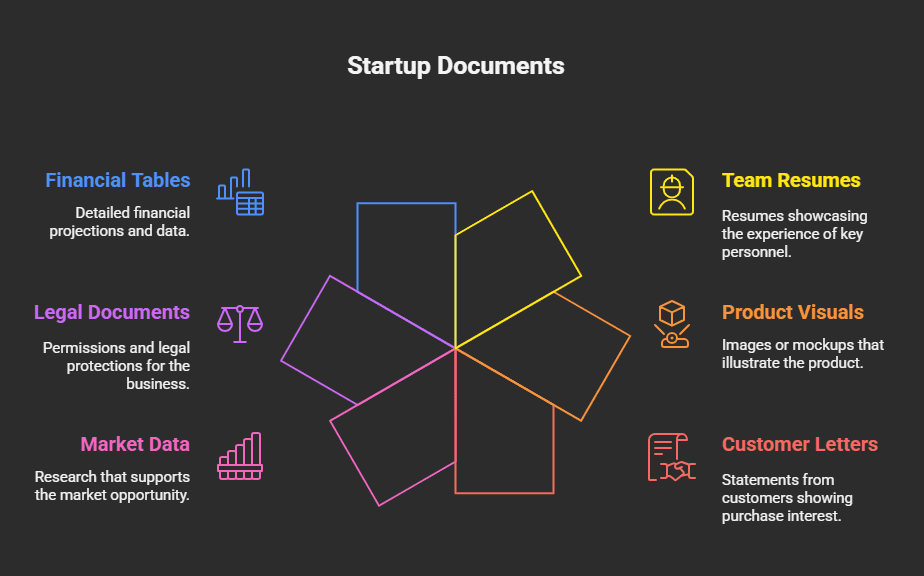So, you’ve got it. That million-dollar idea. The one that keeps you up at night, sketching on napkins and dreaming of what could be. It’s brilliant. It’s bold. It’s… well, it’s still just an idea, isn’t it?
Let’s be honest. Ideas are the easy part. Fun, even. But turning that spark into a roaring fire? That takes something more. Something concrete. A map. A blueprint.
I know. Just the phrase “business plan” can conjure images of dusty textbooks and soul-crushing spreadsheets. It sounds…corporate. Stuffy. The kind of thing that kills creativity. But here’s the kicker: a good business plan does the exact opposite. It breathes life into your idea. It gives it legs. And, if you’re looking for funding? It’s your golden ticket.
Think of it this way: you wouldn’t build a house without a blueprint, right? You wouldn’t just start throwing up walls and hope for the best. Of course not. You’d want to know where the kitchen goes, how many bedrooms you’ll have, and, you know, whether the roof is likely to cave in.
Your business is no different. It’s your dream house. And your business plan is the set of architectural drawings that will make it a reality.
Why Bother? Seriously.
Okay, let’s get real for a second. In a world of “move fast and break things,” does anyone even read these things anymore? The answer, believe it or not, is a resounding yes. But maybe not in the way you think.
The primary beneficiary of your business plan… is you.
That’s the secret. Writing it all down, forcing yourself to articulate your vision, your strategy, your numbers, is a clarifying act like no other. It’s where the rubber meets the road. It’s where you stress-test your own assumptions and find the holes before they sink the ship. Funny thing is, by the time you’ve wrestled your thoughts onto the page, you’ll understand your own business on a level you simply didn’t before. It’s a game-changer.
And yes, of course, other people will read it. If you’re chasing investment, your business plan is your ambassador. It’s your opening argument. It’s the document that proves you’ve done your homework and that you’re a safe pair of hands for someone else’s money. For potential partners, it shows you’re serious. For key hires, it sells the vision.
So, ready to build your blueprint? Let’s break it down.
The Anatomy of a Killer Business Plan
A business plan isn’t a one-size-fits-all document. It can be a lean, one-page affair for internal use or a comprehensive, 50-page tome for venture capitalists. But no matter the length, the core components, the load-bearing walls of your plan, remain the same.
The Executive Summary: Your Elevator Pitch on Paper
If an investor reads only one part of your plan, this is it. The executive summary is your entire business in miniature. It’s the trailer to your blockbuster movie. It has to be punchy, compelling, and, above all, clear.
You’ll write this part last, but it comes first. I know, it sounds backward, but trust me on this. You can’t summarize what you haven’t yet written. After you’ve poured your heart and soul into the details, you’ll be able to distill the essence of your business with a clarity that just isn’t possible at the outset.
What goes in?
- The Problem: What pain point are you solving? Make it relatable.
- Your Solution: Introduce your business, your product, and your service. The hero of the story.
- The Target Market: Who are you helping? Be specific. “Everyone” is not a target market.
- The Competition: Who else is out there, and why are you different? What’s your secret sauce?
- The Team: A brief, shining introduction to the brilliant minds behind the curtain (that’s you!).
- The Financials (A Glimpse): A sneak peek at your sales forecasts and, if you’re seeking funding, how much you need and what you’ll use it for.
- The Ask: State your purpose clearly. Are you seeking $50,000 for equipment? A strategic partner? Be direct.
This isn’t the place for jargon or fluff. It’s about making an immediate impact. It should be so good that it makes reading the rest of the plan an irresistible next step.
Company Description: The Soul of Your Venture
Here’s where you get to tell your story. Don’t be shy. This is the “About Us” section, but with more muscle.
Go beyond the what and into the why.
- Mission and Vision: What’s your grand purpose? Your vision is the future you want to create; your mission is how you’ll get there. These aren’t just fluffy statements for a poster. They’re your compass. They guide your decisions when things get tough.
- Legal Structure: Are you a sole proprietorship, an LLC, or a corporation? This might seem like a dry detail, but it has real implications for liability and taxes. (If you’re on the fence, now’s the time to chat with a legal professional. Seriously.)
- Company History (So Far): Even if your history is just three months of late-night coding sessions in your garage, tell that story. It adds a human element. It shows your journey.
- Objectives: What do you want to achieve in the short and long term? Make them SMART: Specific, Measurable, Achievable, Relevant, and Time-bound. “Increase sales” is a wish. “Increase online sales by 20% in the next six months by implementing a targeted social media ad campaign” is a plan.
This section sets the stage. It gives your reader a sense of who you are and what you stand for. It’s your chance to build a connection.
Market Analysis: Sizing Up the Battlefield
No business operates in a vacuum. You have customers, you have competitors, and you have a market that’s constantly shifting. This is your chance to prove you understand the world you’re about to enter. It’s about showing you’ve looked beyond your own four walls.
- Industry Overview: What does your industry look like? Is it growing? Shrinking? What are the major trends? Think big picture here. Are there technological shifts, regulatory changes, or new consumer behaviors you need to be aware of?
- Target Market Deep Dive: Remember that specific customer from the executive summary? Here’s where you bring them to life.
- Demographics: Age, gender, income, location. The basics.
- Psychographics: This is the good stuff. What are their values? Their hobbies? Their pain points? What keeps them up at night? Create a customer persona, give them a name, a job, and a story. When you know who you’re selling to, every decision, from marketing to product design, becomes easier.
- Market Size: How many of these people are out there? Is the market big enough to sustain your business? This is a numbers game, and you need to show your math.
- Competitive Analysis: You have competitors. Even if no one is doing exactly what you’re doing, your potential customers are solving their problem somehow right now. Who are you up against?
- Direct Competitors: The ones who do what you do.
- Indirect Competitors: The ones who solve the same problem with a different solution.
- Analyze their strengths and weaknesses. Where are they vulnerable? Where do they excel? This isn’t about bashing the competition. It’s about carving out your unique space in the market. What’s your competitive advantage? Is it the price? Quality? Customer service? Innovation? This is your unique selling proposition (USP), and it needs to be crystal clear.
Don’t be afraid of what you find here. If the market is crowded, that might mean it’s a proven concept. If the market is empty, you need to ask yourself why. This section is all about replacing “I think” with “I know.”
Organization and Management: The “Who” Behind the “What”
An idea is only as good as the team that executes it. Investors often say they bet on the jockey, not the horse. This section is where you introduce your jockeys.
- Your Management Team: Who are the key players? For each person, you’ll want a short bio highlighting their relevant experience. Don’t just list their previous job titles; explain what they achieved. Did they grow a previous company’s sales by 300%? Did they build a beloved brand from scratch? This is their highlight reel.
- Organizational Structure: How does it all fit together? An org chart can be surprisingly helpful, even for a small team. It clarifies roles and responsibilities. Who reports to whom? Who owns what? This prevents confusion down the line. Believe me.
- Advisors and Professionals: Do you have a board of advisors? A lawyer? An accountant? Listing these professionals shows that you’re smart enough to know what you don’t know and that you’ve surrounded yourself with expertise. It adds a whole lot of credibility.
If you’re a one-person show right now, that’s okay. Be honest about it. But also outline your future hiring plan. When will you need a marketing manager? A salesperson? This demonstrates foresight. It shows you’re thinking about growth.
Products and Services: The Heart of the Matter
This is it. The main event. The reason you’re here. What are you selling?
Get detailed. Get passionate.
- The Nitty-Gritty Description: Explain your product or service in detail. How does it work? What does it do? If it’s a physical product, what’s it made of? If it’s a service, what does the process look like for the customer? Use simple, clear language. Avoid technical jargon unless your target audience is, well, technical.
- The Value Proposition: This is crucial. Don’t just list features; sell benefits. A feature is what your product is (e.g., “a quarter-inch drill bit”). A benefit is what your customer gets (e.g., “a quarter-inch hole”). People don’t buy products; they buy better versions of themselves. How does your offering make their life easier, better, or more enjoyable?
- Lifecycle and Development: Where is your product in its lifecycle? Is it just an idea? A prototype? Is it already on the market? What are your plans for future development? Are you planning a version 2.0? New features? This shows you’re not a one-trick pony. You’re building for the long haul.
- Intellectual Property (If You Have It): Do you have any patents, trademarks, or copyrights? This can be a huge competitive advantage. If so, flaunt it.
Make the reader feel, taste, or experience what you’re offering. Tell a story. Paint a picture. This is your chance to make them fall in love with your idea just as much as you have.
Marketing and Sales Strategy: How You’ll Reach Your People
A great product that no one knows about is just a hobby. A great product with a killer marketing and sales plan? That’s a business.
This section is all about how you’ll go from zero to hero. How will you find your customers, and how will you convince them to buy?
- The 4 P’s (A Classic for a Reason):
- Product: (You’ve already detailed this, but briefly recap its core value here).
- Price: How did you arrive at your price? It’s not just about covering costs. It’s about perceived value. Are you a premium brand? A budget-friendly option? Your price sends a powerful message. Justify it.
- Place (Distribution): Where will you sell your product? Online? In a brick-and-mortar store? Through distributors? How will you get your product into the hands of your customers?
- Promotion: This is the fun part. How will you spread the word?
- Digital Marketing: Content marketing (blogs, videos), social media, SEO, pay-per-click (PPC) advertising, email marketing.
- Traditional Marketing: Print ads, public relations (PR), direct mail, events.
- Be specific. Don’t just say, “We’ll use social media.” Say “We will target young professionals on LinkedIn and Instagram with short, engaging video testimonials and a launch-day discount code.”
- The Sales Process: Once a customer is interested, how do you close the deal? What are the steps from initial contact to final sale? Who is responsible for sales? What are your sales goals?
Your marketing plan should feel like a cohesive strategy, not just a random list of tactics. It should be directly tied to your target market analysis. Go where your customers are. Speak their language.
Financial Projections: Show Me the Money!
And here we are. The section that makes so many people sweat. The financials. But it doesn’t have to be terrifying. If you’ve done your homework in the previous sections, the numbers are just the logical conclusion.
This is where you translate your words into the language of business: dollars and cents. You’ll likely need three key financial statements. (And yes, this is where a good spreadsheet template or accounting software becomes your best friend.)
- The Income Statement (or Profit & Loss): This is your bottom line. It shows your revenues, costs, and profit over some time (usually monthly for the first year, then quarterly or annually). It answers the question: “Are we making money?”
- The Cash Flow Statement: This might be the most important document of all for a new business. Cash is king. This statement tracks the money coming in and going out of your bank account. You can be profitable on paper, but go bankrupt because you don’t have enough cash to pay your bills. This statement is your early warning system.
- The Balance Sheet: This provides a snapshot of your company’s financial health at a specific moment in time. It shows what you own (assets) and what you owe (liabilities). The difference is your equity.
For a new business, these will be projections. Educated guesses. But they need to be grounded in reality. Base your sales forecasts on your market analysis. Justify your expense estimates. Show your assumptions. An investor knows these are not guarantees. What they’re looking for is a thoughtful, realistic, and well-researched financial plan. They want to see that you understand the financial levers of your business.
And if you’re seeking funding, be explicit. How much do you need? What, exactly, will you spend it on (e.g., “$20,000 for inventory, $15,000 for marketing, $10,000 for equipment”)? How will this investment help you reach the goals outlined in your plan? Be prepared to defend every number.
The Appendix: Your Supporting Evidence

The main body of your plan should be clean and readable. The appendix is where you put all the backup material. The stuff that proves your claims.
This could include:
- Resumes of key team members
- Product photos or mockups
- Letters of intent from potential customers
- Market research data
- Permits, licenses, or patents
- Detailed financial tables
It’s a Living, Breathing Document
Here’s the final, most important piece of advice. Your business plan is not meant to be written once and then filed away to gather dust. It’s not a static document. It’s a living, breathing guide.
The market will change. Your assumptions will be proven wrong. You’ll have brilliant new ideas. And that’s okay. That’s business.
Revisit your plan quarterly. Update your financials. Track your progress against your objectives. Use it to stay focused. Use it to make decisions. Let it evolve as your business evolves.
Crafting a winning business plan is a journey. It will force you to ask hard questions and find honest answers. It will be challenging. It might even be a little messy. But through that process, you’ll forge something invaluable: not just a document, but a deep, unshakeable understanding of your vision.
And that? That’s how you start strong. That’s how you build something that lasts. Now, go get that blueprint started. Your dream house is waiting.








